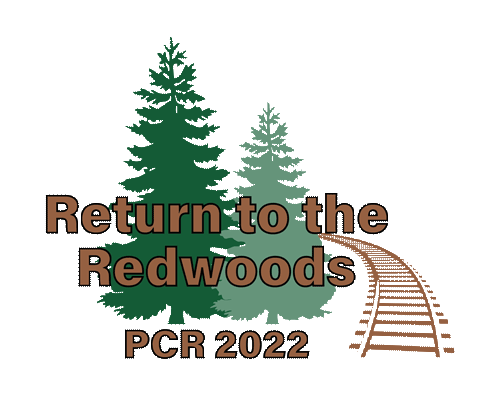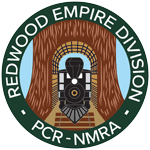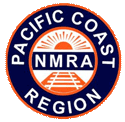Clinics
Clinics are the heart of our conventions and the clinics at the 2022 PCR Conference will appeal to both experienced model railroaders and beginners alike. With a schedule of more than 40 clinics, we are planning a variety of presenters for you to learn from and to talk with on a broad range of topics related to model railroading. Speakers will include respected names in our hobby as well as talented, but perhaps yet unknown, presenters. Most of all, clinics are meant to be a lively and fun exchange of knowledge, ideas, questions and answers, and a dose of inspiration to take home with you.
Schedule
| Thursday, April 21 | |||
|---|---|---|---|
| 8:30am - 9:15am | Rich Mahaney - hazmatrichm@aol.com | Phil Edholm - pedholm@pkeconsulting.com | Jim Providenza |
| Selecting Industries for Your Model Railroad | 3D Printed Building Framing | Finer than Fine Scale | |
| 9:45am - 10:30am | Rich Mahaney - hazmatrichm@aol.com | Rich Mossholder | Dennis Drury - cowrr1984@gmail.com |
| Quick Industries for Your Model Railroad | Backwoods Track | Setting up and Configuring JMRI on a Raspberry Pi | |
| 11:00am - 11:45 am | Tony Thompson | John Stutz | Jim Providenza |
| Tank Car Operation with Realistic Waybills | Prototype Timber Tunnel Portals | Creating Realistic Routings for Freight Traffic | |
| 6:30pm - 7:15pm | Neumann/Providenza Layout Design and Operations SIG Round Table Discussions (6:30pm-9:45pm) | Connery, Birdsong, Booth, Ingraham, Lane, O'Dorney | Bruce Morden - brucedmorden@gmail.com |
| The San Ramon Valley Branch of the SP/Modeling it in N-Scale | Model Railroad Extremes | ||
| 7:45pm - 8:30pm | Earl Girbovan, MMR - egirbovan@netzero.com | Phil Edholm - pedholm@pkeconsulting.com | |
| Introduction to 3D Filament Printing | Moss Landing - Evolution of a Module | ||
| 9:00pm - 9:45pm | N/A | Rich Mahaney - hazmatrichm@aol.com | |
| Tank Car Industries | |||
| Friday, April 22 | |||
|---|---|---|---|
| 8:30am - 9:15am | Al Turnbull | Seth Neumann | Ed Merrin - edmerrin@comcast.net |
| Basic Electrical | Model Railroad Communications (Phones for Ops) | Refining the Technique of Smartphone Focus Stacking for Layout Photography | |
| 9:45am - 10:30am | Al Turnbull | Chip Merriam - chipmeriam@comcast.net | N/A |
| Back to Basics on Scenery | Amateur Authorship: Developing and Submitting an Article for Publication | ||
| 11:00am - 11:45 am | Edwin Hall, MMR | Tony Thompson | Frank Markovich |
| Airbrush Basics | Tank Car Operation with Realistic Waybills [Repeat] | Building a Wood False Front | |
| 6:30pm - 7:15pm | Rich Mahaney - hazmatrichm@aol.com | Bruce Morden - brucedmorden@gmail.com | Earl Girbovan - egirbovan@netzero.com |
| Interesting Flat Car Loads | Layout Without a Plan | Contest Judging | |
| 7:45pm - 8:30pm | Rich Mahaney - hazmatrichm@aol.com | TBA | Phil Edholm - pedholm@pkeconsulting.com |
| Sign Me Up | 3D Printed Building Framing [Repeat] | ||
| 9:00pm - 9:45pm | Rich Mahaney - hazmatrichm@aol.com | TBA | Al Turnbull |
| The Second Lives of Cabooses | Basic Electrical | ||
| Saturday, April 23 | |||
|---|---|---|---|
| 8:30am - 9:15am | Chip Meriam - chipmeriam@comcast.net | Jim Providenza | John Cockle & Steven Cox |
| Ground Roast Scenery | Creating Realistic Routings for Freight Traffic [Repeat] | Switchin' on the Dock of the Bay | |
| 9:45am - 10:30am | Al Turnbull | Al Daumann | Mike Manson |
| Back to Basics on Scenery [Repeat] | Enhancing Small Layout Operations - Passenger & Mail | Restoration Projects of the Northwestern Pacific RR Historical Society | |
| 11:00am - 11:45 am | Al Turnbull | Jon Schmidt - jontenor@gmail.com | Mark Williams |
| Trees and Such | Arduino for Model Railroading | Building a Small Layout from the Base Up | |
Clinics and Presenters
Please note this list is TENTATIVE and subject to change without notice. The list will be updated periodically, so check back here for the latest additions. (updated 04/13/2022)
- Al Daumann - Enhancing Small Layout Operations - Passenger & Mail Ops
This clinic will discuss multiple techniques to enhance passenger & mail operations by creating additional steps during the ops session that normally would be made between sessions or not at all. - Mike Manson - Restoration Projects of the Northwestern Pacific Railroad Historical Society
Like well-used scale models, prototypical railroad cars and locomotives need maintenance, or even restoration. The Northwestern Pacific Railroad Historical Society has restored two cabooses. Society members are actively restoring two wooden passenger cars, including an 1869 Central Pacific coach. A 1904 boxcar awaits its turn in the restoration process. - Frank Markovich - Building a False Wood Front - Detailing the Wood and
Adding Details
PLEASE NOTE This will be a hands-on clinic - make and take. All materials will be provided but attendees will need to bring an X-Acto knife with a #11 Blade and a cutting surface - small healing board, piece of masonite etc. The wood will be pre-stained and then we will distress the wood, bring out grain detail, and then color the wood (using a peeling paint technique). Then we will build the wall. If you have a final color that you want, please bring the paint (must be water based) to the clinic. This clinic will be limited to 35 attendees and you must sign up in advance by emailing clinics2022@pcrnmra.org - Chip Meriam - Amateur Authorship: Developing and Submitting an Article for Publication
Creating ideas for worthwhile articles, submission guidelines from various publications, photography, getting the words out of your head and organized, transmitting text and photos to an editor, NMRA "Model Railroad Author" AP Certificate. - Dennis Drury - Setting up and Configuring JMRI on a Raspberry Pi
The Raspberry Pi is a low cost but fully functional microcomputer. The clinic will show you just how easy it can be to install and configure JMRI on the RPi. It will also show how you can get C/MRI up and running so you can create a functional replica of a US&S CTC panel. Other functions of JMRI will be touched upon as well. No programming experience needed. - Seth Neumann - Model Railroad Communications
Seth presents a brief history of railroad communications for dispatching and describes how to build a telephone system suitable for a layout set in the 20th century. Phone equipment and station signaling will be covered. - Seth Neumann and Jim Providenza - Layout Design and Operations Discussion Session
- Jim Providenza - Finer than Fine Scale
Join Jim as he explores modeling the Sandy River and Rangeley Lakes in his backyard in a unique combination of scale and gauge Proto 20.3n2. Prototype-based and operations oriented, mostly scratch-built, hand laid and kitbashed - not your usual garden railway fare! - Jim Providenza - Creating Realistic Routings for Freight Traffic
Research into historical resources is the key to understanding how freight traffic flowed. Modern computer tools are the means to do that and organizing the results. What seems like a mundane chore at best, is in fact, like most research, is worse than eating peanuts - you can't stop with just handful! Wait until you see some of the round about ways shippers sent 'stuff' to their customers! - Jon Schmidt - Arduino for Model Railroading: Hitting the Bell
Many railroad interlocking towers had alarm bells to alert the tower operator that a train was approaching. On a large club railroad where I volunteer, there are train order offices located under the layout. We are setting up a closed-circuit camera system so that the agent/operator can see the approaches to his/her town. We also wanted trains to "hit the bell" as they approached. We decided to implement an Arduino-based solution to the problem. This clinic discusses what we built and what we learned while building it. - Tony Thompson - Tank Car Operation Using Realistic Waybills
Prototype tank cars in the transition era were operated in different ways than most other freight cars. The clinic describes these operation patterns and presents ways in which realistic waybill cycles can be used to represent tank car operation. - Mark Williams - Building a Small Layout from the Base Up
This illustrated talk will cover the complete process from choosing a base for the layout (7' x 3'), through track and wiring, to scenic elements like mountains and gorges, and finishing up with scenery and buildings. - Rich Mossholder - Backwoods Track
Does your short-line layout suffer from "tidy trackwork"? Do you wish the track manufacturers would make something a little less uniform? In this clinic Rich will show you how he hand lay backwoods track using basic tools and materials. You'll learn how to make your own ties and spikes, and lay your track. Your friends will be astonished and amazed when they see. - Pete Birdsong MMR, Brian Booth, Dave Connery MMR, Paul Ingraham, Steve Lane, Mike O'Dorney - The San Ramon Valley Branch of the SP and Modeling It in N-Scale
We will briefly cover the history of the branch, what it hauled and how it fit in to the broader picture of the SP in the Bay Area. We will then describe how we researched it, built the sections and how we are modeling parts of this branch on a portable N-scale layout, along with what we are learning with this project. - Phil Edholm - 3D Printed Building Framing
Building large complex framed structures in wood often results in both unrealistic and fragile buildings. In this clinic, the next generation of hybrid modeling will be discussed; using 3D printed assemblies for wall framing with wood sheathing is reviewed. The techniques are used to build a large (8"x20") O scale structure. The clinic will cover design, CAD, printing, painting, and assembly. A number of suggestions on how to marry advanced technology with traditional modeling techniques will be discussed. - Phil Edholm - Moss Landing - Evolution of a Module
Moss Landing is a 12'x3'-4" On30 module that is a re-interpretation of Moss Landing as it would have appeared in the late 1910s/early 1920s if the sand barrier to the ocean had been opened then instead of in the 1950s. The clinic discusses the evolution in the layout and industries on the module as it went from being a generic west coast location to a more specific location and story tied to the geography and history of the Moss Landing area at the turn of the century. Attendees will learn how research and local details can be used to create much more realistic and appealing models, even when modeling at least some fiction. - John Stutz - Prototype Timber Tunnel Portals
In contrast to traditional models, most prototype timber tunnel portals are essentially free standing flat roofed rock sheds, extending the tunnel's timber lining far enough into the open to keep the track clear of falling debris. This clinic describes their usual construction, illustrated with numerous photographs of diverse examples, and demonstrates proven modeling techniques. - Bruce Morden - Model Railroad Extremes
Our hobby has lots of choices that all fit in the "Big Tent". This is a quick look at some of the extremes within the hobby. Largest, smallest, longest, most expensive, most realistic, most detailed, least realistic, least detailed, oldest, etc. How do we navigate through all this to achieve the railroad we really desire? Some elements of layout design, inspiration, perseverance and encouragement. - Al Turnbull - Basic Electrical
An instruction on DC and DCC electronics with methods of wiring a layout or converting from DC to DCC. Explanations of Buss / feeders and techniques, what to watch for and why we do things. Some math included. Bring your slide rules. - Al Turnbull - Back to Basics on Scenery
A beginner type class that shows how to achieve the 'magic' of making a railroad. Will show examples of different methods of constructing, painting and adding the elements that make a scene come to life. I'll discuss some the techniques used between portable and home layouts. Good refresher for those that have been around the block already. - Al Turnbull - Trees and Such
Discuss the different types of trees and how to achieve the look of same. Will go over what seems to work best for portable vs home layouts. I'll show how to put together different types with some emphasis on 'bottle brush' pines and how I make those. - Rich Mahaney - Selecting Industries for Your Model Railroad
This presentation is designed to help model railroaders select industries and community businesses for their model railroad through a systematic approach and by answering a series of questions, thinking about how railroads service their customers, increasing railroad traffic by thinking about the types of railroad cars that are used to service the needs of different types of industries. Examples of real facilities and model railroad examples are used to make the points. - Rich Mahaney - Quick Industries for Your Model Railroad
This presentation is designed give model railroaders industry ideas for their model railroad that can be assembled in several evenings (or days) of work. These industries can quickly increase railroad traffic and new customers. Examples of real facilities and model railroad examples are used to make the points. - Rich Mahaney - The Second Lives of Cabooses
This clinic looks at cabooses still in service, cabooses that have been turned into businesses or part of business, cabooses that have been turned into information stands and cabooses that can be found next to train stations, in parks and at museums. This presentation gives the modeler ideas for cabooses uses on a modern era layout or for diorama displays. - Rich Mahaney - Tank Car Industries
A look at industries that use tank cars to offload and load, storage tanks for low- and high-pressure products, loading racks, heating unloading, low pressure and high-pressure tank cars and other related topics. - Rich Mahaney - Sign Me Up
A presentation that looks at the signs and murals that are painted on buildings that can be modeled to add more interest to blank walls of buildings or advertising. - Rich Mahaney - Interesting Flat Car Loads
This presentation looks at a variety of "stuff" that is transported on flat cars by railroads. It answers the question, "do they really transport that "stuff" on flat cars for real"? It will give the modeler some ideas for their own flat car loads to build. - Earl Girbovan - Introduction to 3D Filament Printing
Is a filament printer for you? This clinic will present some of the pros and cons of filament printing. Tools, detail parts and freight car underframes are just a few of the many things that can be printed inexpensively. And once you have a printer, you'll find many additional uses. Also presented will be some of the free, easy to use software that can have you printing parts in no time. 3D printing opens up the door to hybrid modeling, where the printer does the job of making repetitious or framework parts, leaving the detailing for you to complete. Come and see what this technology can do. - Earl Girbovan - Contest Judging
Judging models is a very rewarding experience and a great way to improve your own modeling skills. Although it may seem daunting at first, the process is straightforward and well documented. In this clinic the judging procedures and matrices will be presented and discussed. You'll find that it's actually very enjoyable. And, judging gives you 2 points toward your volunteer certificate. - Chip Merriam - Ground Roast Scenery
A clinic on using recycled coffee grounds as a scenic material. A modern take on an old idea. Dissecting a coffee pod, using the spent grounds as a scenic material and a few suggested uses for the left-over parts.
- Bruce Morden - Layout Without a Plan
What happens if you build a layout and then want to make changes? Add signals, change track arrangements, add more lighting, add animation, and more? The argument for building small and experimenting before you build your life layout. - Edwin Hall, MMR - Airbrush Basics
This clinic will cover the history of the airbrush, types of airbrushes, paint selection and taping techniques. - Ed Merrin - Refining the Technique of Smartphone Focus Stacking for Layout Photography
In previous clinics, the adaptation of focus stacking to smartphone cameras was introduced as a method of taking photos within layout scenes at a low ground level perspective. This contrasted with the "helicopter" and outside the scene that standard methods provide. In this clinic, problems such as artifacts are tackled by techniques such as determining the optimal number of exposures needed to increase accuracy of the blending process. - John Cockle and Steven Cox - Switchin' on the Dock of the Bay - Richmond Pacific History, Operations and Modeling Possibilities
John Cockle was Superintendent of Operations for Richmond Pacific for the inception of the railroad as it is today, and Steven Cox lived in nearby Marina Bay for a number of years and is planning a sizable N-scale railroad of the area. Together, their presentation will explore the rich history and operations of this fascinating little railroad, and then review a process for interpreting the real railroad in model form.
We look forward to seeing you in April 2022 and enjoying our time together!
For more information, please email Clinics2022@pcrnmra.org


